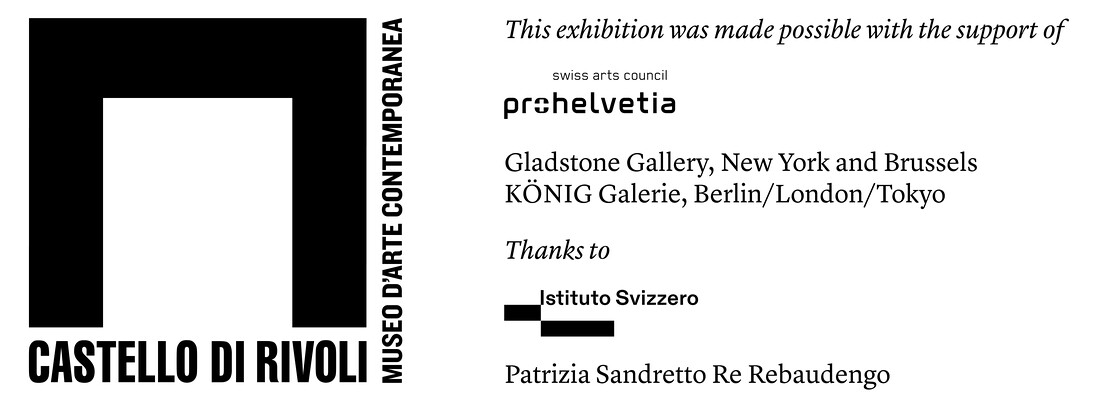How to Grow and Still Stay the Same Shape
October 31, 2019–February 23, 2020
Piazza Mafalda di Savoia
10098 Rivoli Turin
Italy
Hours: Wednesday–Friday 10am–5pm,
Saturday–Sunday 11am–6pm
T +39 011 956 5222
Drafted by Carolyn Christov-Bakargiev and Marianna Vecellio
Starting from the observation of nature and its changing patterns, Claudia Comte (b. 1983) creates large-scale environmental installations that embody the world from the perspective of a form of consciousness primarily shaped through the digital experience. Examining current issues such as climate change and global pollution, her work also narrates the memory of materials and the wisdom of craft. All the projects by the Swiss artist share a series of rules, as well as reference points, which clearly link one work to another in the conception phase. From this process, her works combine a rigid method with a dynamic approach also characterized by a minimalist attitude.
Born and raised in Grancy, a small village near Lausanne at the foot of the Mont Tendre, one of the highest peaks of the Jura Mountains, a limestone mountain range located in the Alps, the artist puts a strong autobiographical reference in her artworks. The forest with its trees and all its non-anthropocentric data belong to her memory and specifically her childhood memories, and these elements are the first to influence the translation of the landscape into her creations. If Comte’s sculptures are rooted in the naturalness of biomorphic forms, her mural interventions transform surfaces into optical sequences and infinite graphic signs with a digital age aesthetic. The monochromatic vocabulary that invests all her work brings her visually close to the abstraction of Sol LeWitt, Bridget Riley and even John Armleder, an artist with whom she studied.
On the occasion of her exhibition at Castello di Rivoli, Comte has created a gigantic mural intervention consisting of eleven individual wall paintings specially designed for the galleries on the third floor of the historic Royal residence. Also inspired by some 18th-century decorative motifs present on the ceilings and walls of the main museum building, the work develops repeated modules through space. The artist also draws her inspiration from the information and the geological specificity of the area where the Museum is located, or the Rivoli-Avigliana morainic amphitheatre.
In the phase of conception and creation, Comte was able to deepen the study that investigates this stratification of reliefs derived from the movements of the glaciers in the Neozoic era. She added to her site-specific proposal recent research consisting in the exploration of the underwater world, the life in the sea and the mysterious submerged landscape. In this sense Comte’s work expresses a return to absolutely current cybernetic thinking that in the 1950s, 1960s and 1970s studied the patterns of nature in relation to the emergence of information technology. Let’s think of the work of scholars such as Gregory Bateson, author of Towards an ecology of the mind in 1972.
Also on view:
Michael Rakowitz. Imperfect Binding (until January 19, 2020)
Yuri Ancarani. The Roots of Violence (until November 10, 2019)
CRRI / The Dena Archives (until February 23, 2020)
Roberto Cuoghi. M I R A C O L A, New installation in Piazza San Carlo, Turin, for Luci d’Artista (October 29, 2019–January 12, 2020)
By Artists: From the Home to the Museum, from the Museum to the Home. Homages to the Works of the Cerruti Collection. Chapter 3. Elisa Sighicelli. Lumenombra Lumenicta, 2019 (October 31, 2019–January 19, 2020)
Pedro Neves Marques. Becoming Male in the Middle Ages (November 1–February 23, 2020)
The Salvator Mundi of Leonardo da Vinci

